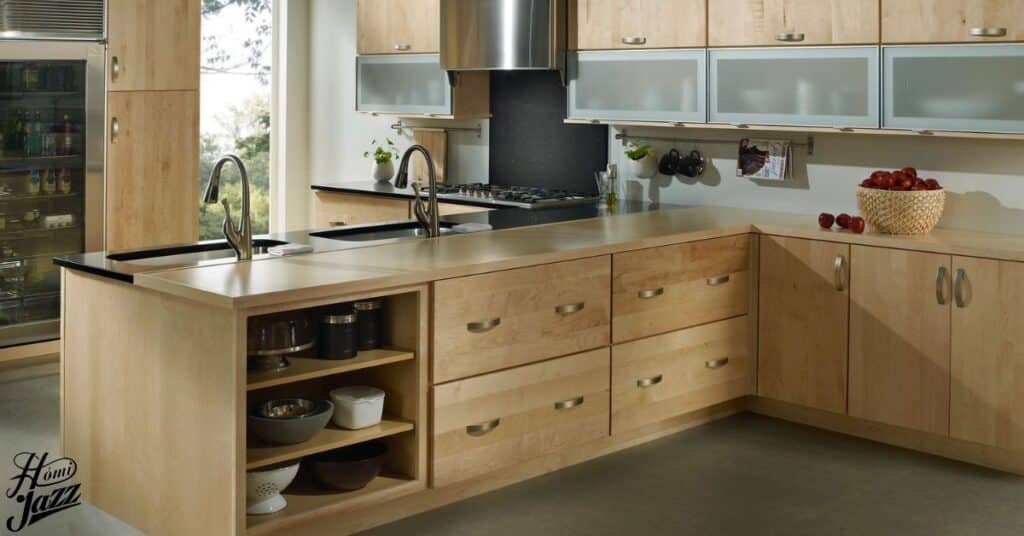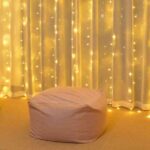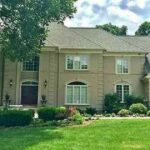Kitchen cabinets are typically constructed from a variety of materials, each with its unique properties. From hardwood to laminate, understanding the materials used in kitchen cabinetry is essential for making informed decisions about your home design.
Dive into the world of kitchen cabinets and uncover the secrets behind their construction. From sturdy hardwood to sleek laminate, discover the diverse materials that shape these essential fixtures. Explore the artistry and innovation behind modern kitchen cabinetry materials.
Kitchen cabinets are typically made of materials like hardwood, plywood, or MDF (Medium Density Fiberboard), offering durability and aesthetic versatility. These materials are chosen for their strength, moisture resistance, and ability to be customized to suit various styles and preferences.
Anatomy of a Cabinet

The anatomy of a cabinet consists of several essential components. Firstly, the cabinet box, often made of materials like plywood, MDF, or particleboard, forms the main structure. Within the box, shelves provide storage space and can be adjusted or removed for customization.
Secondly, doors and drawers are access points to the cabinet’s interior, typically attached with hinges or slides. Handles or knobs are added for functionality and aesthetic appeal. Together, these elements create a functional and organized storage solution for kitchens, bathrooms, and other spaces.
Read this blog:http://HOW TO ADD TRIM TO KITCHEN CABINETS
Waterproof material for kitchen cabinets

Waterproof materials for kitchen cabinets are essential for protecting against moisture damage. One popular option is marine-grade plywood, which is specially treated to resist water and humidity. Its durable construction makes it ideal for kitchen environments prone to spills and splashes.
Another waterproof material is PVC (polyvinyl chloride), known for its excellent moisture resistance. PVC cabinets are easy to clean and maintain, making them a practical choice for busy kitchens. Additionally, PVC does not warp or swell when exposed to water, ensuring long-term durability in damp conditions.
High-pressure laminate (HPL) is also a waterproof choice for kitchen cabinets. Composed of multiple layers of resin-soaked paper, HPL offers superior water resistance and durability. It comes in a variety of colors and finishes, providing both style and functionality for kitchen cabinetry.
Read this also:http://HOW THICK ARE KITCHEN COUNTERTOPS
Best Kitchen Cabinet Materials List
When it comes to selecting the best kitchen cabinet materials, hardwood tops the list for its durability and classic appeal. Woods like oak, maple, cherry, and hickory are popular choices due to their natural beauty and strength. While hardwood cabinets may come at a higher cost. Their longevity and timeless look make them a worthwhile investment for any kitchen.
For a more budget-friendly option without sacrificing aesthetics, wood veneer provides an excellent alternative. Wood veneer cabinets feature a thin layer of natural wood bonded to a less expensive material. It offers the look of solid wood at a lower price point. They come in various finishes and styles, making them versatile and adaptable to different kitchen designs.
Plywood is another top contender on the best kitchen cabinet materials list, prized for its strength and resistance to dents and scratches. Made from thin layers of wood glued together under heat and pressure, plywood cabinets offer excellent durability and stability. They are also less susceptible to warping and moisture damage compared to other materials, ensuring longevity in the kitchen environment.
Solid Wood

Solid wood cabinets are renowned for their durability, providing long-lasting strength and resilience in kitchen environments. Their natural beauty adds a touch of elegance to any home, elevating the aesthetic appeal of the kitchen space.
Despite their durability and aesthetic charm, solid wood cabinets often come with a higher price tag compared to alternative materials, making them a more significant investment. They may be prone to warping or damage when exposed to fluctuating levels of humidity, requiring careful maintenance to preserve their integrity over time.
Popular Wood Cabinets

Popular wood cabinets offer timeless elegance and warmth to kitchen spaces, enhancing the overall aesthetic appeal of the room. Their natural grains and textures add character and charm, creating a cozy atmosphere.
These wood cabinets may require regular maintenance, including polishing and refinishing, to preserve their appearance and prevent wear and tear. They can be susceptible to damage from moisture and humidity, requiring careful installation and protection in wet areas such as kitchens and bathrooms.
Wood Veneers

Wood veneers provide a cost-effective alternative to solid wood cabinets, offering a similar aesthetic appeal at a fraction of the cost. They come in a variety of finishes and styles, allowing for versatility in design choices.
This kind may be prone to chipping or peeling over time, particularly in high-traffic areas or with heavy use. They may not offer the same level of durability as solid wood cabinets, requiring more frequent maintenance and care to preserve their appearance.
Plywood

Plywood cabinets are known for their affordability and resistance to dents and scratches, making them a practical choice for budget-conscious homeowners. They offer better water resistance compared to some other materials, adding durability to kitchen cabinets.
These cabinets may not be as durable as solid wood options, and some variations come with a veneer finish that can chip or peel over time. While they provide a strong and resilient option for cabinet construction, proper care and maintenance are still necessary to ensure longevity.
High-density Fiberboard (HDF)

High-density fiberboard (HDF) cabinets offer a smooth surface perfect for painting and finishing, providing versatility in design options. They are dense and strong, resisting warping and providing structural stability.
HDF cabinets can be heavy and susceptible to damage from water if not properly sealed. While they offer a cost-effective alternative to solid wood, their weight may make installation more challenging, requiring careful consideration during the planning process.
Medium-density Fiberboard (MDF)

High-density fiberboard (HDF) is praised for its uniformity and smooth surface, ideal for painting and finishing with various coatings. It offers excellent dimensional stability, resisting warping and swelling even in humid environments.
These are susceptible to water damage if not properly sealed, limiting their use in areas prone to moisture. While HDF is more affordable than solid wood, it may not provide the same level of durability, making it essential to handle with care to prevent chipping or cracking.
Thermofoil

Thermofoil cabinets are renowned for their sleek, modern appearance and affordability, making them a popular choice for budget-conscious homeowners. They offer excellent resistance to water spills and scratches, providing durability in busy kitchen environments.
The thermofoil cabinets can be susceptible to heat damage and may be challenging to repair if chipped or damaged. While they come in a variety of colors and finishes, they lack the natural look and feel of real wood options, which may deter some homeowners from seeking a more traditional aesthetic.
Laminate

Laminate cabinets are a popular choice for their affordability, durability, and wide range of color options, making them ideal for homeowners on a budget. They are resistant to stains, scratches, and heat, providing easy maintenance in busy kitchen settings.
Such cabinets are not as durable as solid wood or plywood options and cannot be repaired once damaged. While they offer versatility in design, their synthetic appearance may not appeal to those seeking a more natural aesthetic.
Melamine

Melamine cabinets are renowned for their durability, moisture resistance, and affordability, making them a popular choice for kitchens and bathrooms. They come in a wide array of colors and finishes, offering versatility in design options.
However melamine cabinets can be prone to chipping, and if the core is exposed to water, it may swell, leading to damage. Installation can also be more challenging due to their weight compared to other materials. Despite these drawbacks, melamine cabinets remain a practical and cost-effective solution for many homeowners.
Particle Board

Particle board, composed of wood chips, sawdust, and resin, is valued for its affordability and lightweight nature, making it a popular choice for budget-conscious projects.
The particle board is less durable than other materials and susceptible to water damage, limiting its suitability for high-moisture environments like kitchens and bathrooms. Despite its drawbacks, particle board remains a cost-effective option for various applications where durability is not the primary concern.
Frequently Asked Questions
What are kitchen cabinets usually made from?
Kitchen cabinets are usually made from a variety of materials such as hardwood, plywood, MDF (Medium Density Fiberboard), particleboard, or melamine.
What are cheap cabinets made out of?
Cheap cabinets are often made out of materials like particleboard or melamine, which are more affordable than solid wood options.
Which material is used for kitchen cabinets?
The materials commonly used for kitchen cabinets include hardwood, plywood, MDF, particleboard, or melamine, depending on the desired quality and budget.
How do you tell what your kitchen cabinets are made of?
You can determine what your kitchen cabinets are made of by inspecting the construction and surface materials, checking for wood grains, and consulting any documentation provided by the manufacturer or installer.
What wood are high-end cabinets made of?
High-end cabinets are typically made of premium hardwoods such as cherry, maple, oak, or walnut, known for their durability, aesthetic appeal, and superior craftsmanship.
Are kitchen cabinets made of real wood?
While some kitchen cabinets are made of real wood, others may incorporate engineered wood products like plywood or MDF for cost-effectiveness or specific design requirements.
What type of wood is used for kitchen cabinets?
Common types of wood used for kitchen cabinets include cherry, maple, oak, birch, and walnut, each offering unique characteristics in terms of grain pattern, color, and durability.
Conclusion
Understanding the materials used in kitchen cabinets is essential for making informed decisions during renovations or new installations. Cabinets can be crafted from various materials, ranging from traditional hardwoods like oak and cherry to engineered options such as plywood, MDF, or particleboard. Each material comes with its own set of advantages and disadvantages, influencing factors like durability, cost, and aesthetic appeal.
While hardwoods offer natural beauty and longevity, they often come at a higher price point compared to engineered wood products like MDF or melamine. Considerations such as water resistance, maintenance requirements, and environmental impact play crucial roles in selecting the right material for kitchen cabinets. By weighing these factors and understanding the characteristics of different materials, homeowners can create functional and stylish kitchen spaces tailored to their preferences and budget constraints.

Howdy is behind this home blog, sharing personal stories, thoughts, and insights from daily life. I can dedicated to bringing you the latest trends, expert advice, and creative ideas to make your home the sanctuary you’ve always dreamed of. Whether you’re looking for DIY tips, home decor inspiration, home loans, rentals or renovations.







